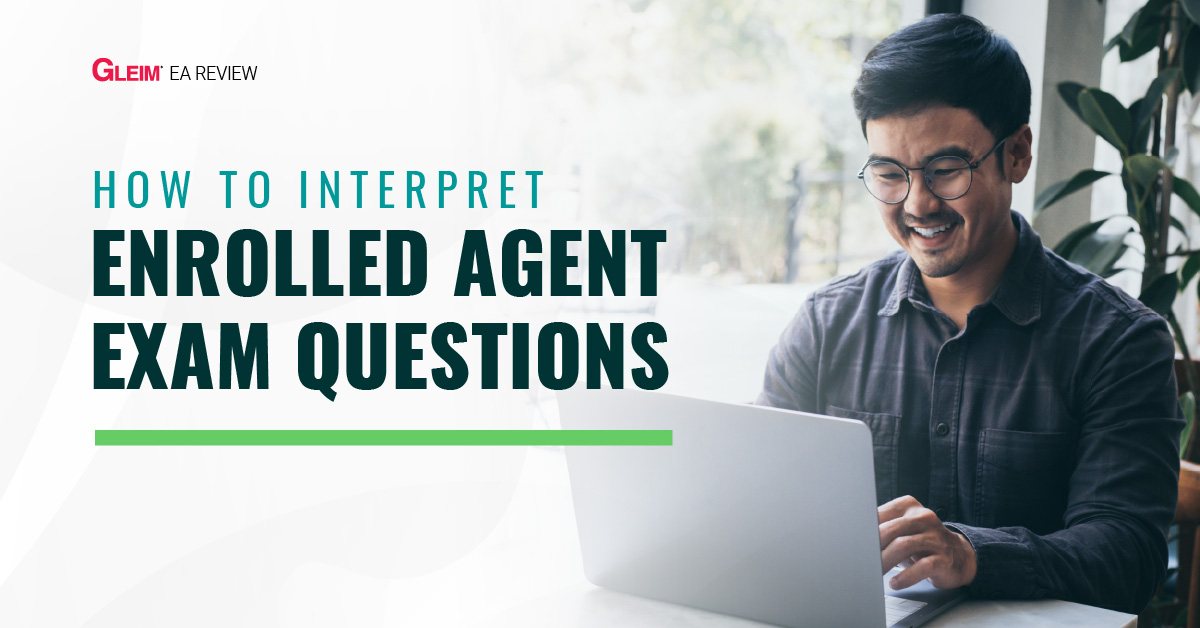Contact Us : 800.874.5346 International: +1 352.375.0772

The Enrolled Agent exam is a challenging test that covers a variety of topics. The questions can be tricky, and it’s important to know how to approach and interpret them correctly. Here is some helpful information on Enrolled Agent exam questions and approaches you can take to study.
The Enrolled Agent exam, officially called the Special Enrollment Exam (SEE), is a three-part, computer-based test covering various tax-related topics. The exam is administered by Prometric on behalf of the IRS and is used to assess your knowledge and skills in tax law. Each part includes 100 multiple-choice questions.
The Enrolled Agent exam is graded on a scale of 40-130. You must score a 105 or above on each part to pass.
Many candidates succeed on their first attempt. The pass rate for each part hovers between 60 and 90 percent. You can increase your chances of success by studying at least 10 hours per week.
Multiple-choice questions (MCQs) on the Enrolled Agent exam consist of three basic parts: the question stem, the best answer choice, and the distractors.
The question stem is the part of the question that asks you to do something. It includes the information you need to answer the question.
The best answer choice is the one that most accurately responds to the question stem. Distractors are the other choices that may look right but are actually incorrect.
There are three types of MCQs that you’ll encounter:
Now that you understand the basics of MCQs, let’s talk about how to answer them. A few key techniques can help you select the best answer choice.
Now, let’s discuss how to prepare for the exam.
This part covers topics like filing status, dependents, gross income, adjustments to income, itemized deductions, and tax credits. You’ll also be tested on your knowledge of self-employment taxes and retirement plans.
To prepare for this part of the Enrolled Agent exam, start by reviewing IRS publications like Form W-12 Opens in new window and Publication 17. These free resources will give you a good overview of the individual tax return process.
This part covers topics like business entity types, income, expenses, assets, liabilities, and tax credits. You’ll need to demonstrate your knowledge of payroll taxes and information returns.
To prepare for this part, start by reviewing IRS resources like Publication 15 (Circular E), which covers employer responsibilities for withholding, depositing, and paying employment taxes.
This part tests your knowledge of Circular 230 rules, IRS practice and procedure, and ethics.
To prepare for this part, review Circular 230 and the Enrolled Agent exam study materials provided by the IRS. You should also brush up on your knowledge of professional ethics and standards.
The easiest way to ensure you’re prepared for the EA exam is to study with Gleim. We offer a comprehensive Enrolled Agent review course covering all three exam parts, and have been helping candidates earn their EAs for decades. Our Premium Review System includes Access Until You Pass, your own Personal Counselor, and 72 hours of CPE. At Gleim, we are here for you before you study, while you study, and after you pass.